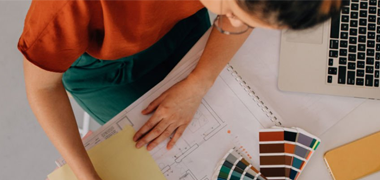
How do I become a interior designer?
Master of Interior Design
- There are no mandated entry requirements.
 RMIT University
RMIT University
Diploma of Interior Design
- There are no mandated entry requirements.








Certificate IV in Interior Decoration
- There are no mandated entry requirements.






Advanced Diploma of Interior Design
- There are no mandated entry requirements.





Associate Degree in Interior Decoration and Design
- There are no mandated entry requirements.
 RMIT University
RMIT University
Master of Design (Interior Architecture)
- There are no mandated entry requirements.
 University of South Australia
University of South Australia
Bachelor of Interior Design (Commercial)
- There are no mandated entry requirements.
 Torrens University Australia
Torrens University Australia
Bachelor of Interior Design (Residential)
- There are no mandated entry requirements.
 Torrens University Australia
Torrens University Australia
Bachelor of Interior Design (Honours)
- There are no mandated entry requirements.
 RMIT University
RMIT University
Related occupations
Junior Interior Designer
A Junior Interior Designer collaborates with clients to create concepts, prepares sketches, mood boards, sources decor, and communicates with stakeholders.
Interior Stylist
An Interior Stylist enhances the aesthetic of spaces by creating concepts, sourcing decor, and communicating client needs while staying current with trends.
Colour Consultant
A Colour Consultant advises on colour choices for decor, requiring creativity, attention to detail, and strong client communication skills.
Furniture Designer
A Furniture Designer creates plans and prototypes for furniture, customising designs to meet client needs while considering trends and materials.
Kitchen Designer
A Kitchen Designer creates kitchen layouts, takes measurements, sources materials, and collaborates with builders, requiring creativity, organisation, and stakeholder communication.
Bathroom Designer
A Bathroom Designer creates layouts, sources materials, and liaises with clients and builders, requiring creativity, attention to detail, and knowledge of bathroom trends.
Design Coordinator
A Design Coordinator manages design concepts for interiors and exteriors, liaising with clients, creating plans, and focusing on trends and styling.
Interior Design Consultant
Interior Design Consultants create and decorate indoor spaces for residential and commercial clients, using design software and collaborating with tradespeople.
Commercial Interior Designer
A Commercial Interior Designer creates and develops interior spaces for businesses, requiring design skills, project management, and industry knowledge.
Property Stylist
Property Stylists enhance residential properties' appeal by arranging decor and furniture to attract potential buyers or renters.
Interior Architect
An Interior Architect designs and optimises interior spaces for functionality and aesthetics, collaborating with clients and teams to meet project needs.
Design Consultant
A Design Consultant works with clients to create functional and appealing designs, developing concepts and overseeing project implementation.
Design Manager
A Design Manager leads design projects across various industries, coordinating teams, managing resources, and ensuring client needs are met.
Common questions
How much does an Interior Designer earn?
In Australia, a full time Interior Designer generally earns $1,600 per week ($83,200 annual salary) before tax. This is a median figure for full-time employees and should be considered a guide only. As you gain more experience you can expect a potentially higher salary than people who are new to the industry.
What are the job opportunities for an Interior Designer?
This industry has seen strong employment growth in recent years. There are currently 9,200 people working as an Interior Designer in Australia compared to 7,800 five years ago. Interior Designers may find work across all regions of Australia, particularly larger towns and cities.
Source: Australian Government Labour Market Insights
How do I become an Interior Designer?
A Certificate IV in Interior Decoration is an ideal qualification if you’re planning a career as an Interior Designer. You’ll explore 2D and 3D creative design principles and technical drawings and learn how to work with colour, furniture and soft furnishings. You could also consider a Diploma of Interior Design or a Diploma of Interior Design and Decoration.
Further reading


How to start a Career in Human-Centred Design
21st October 2024)

